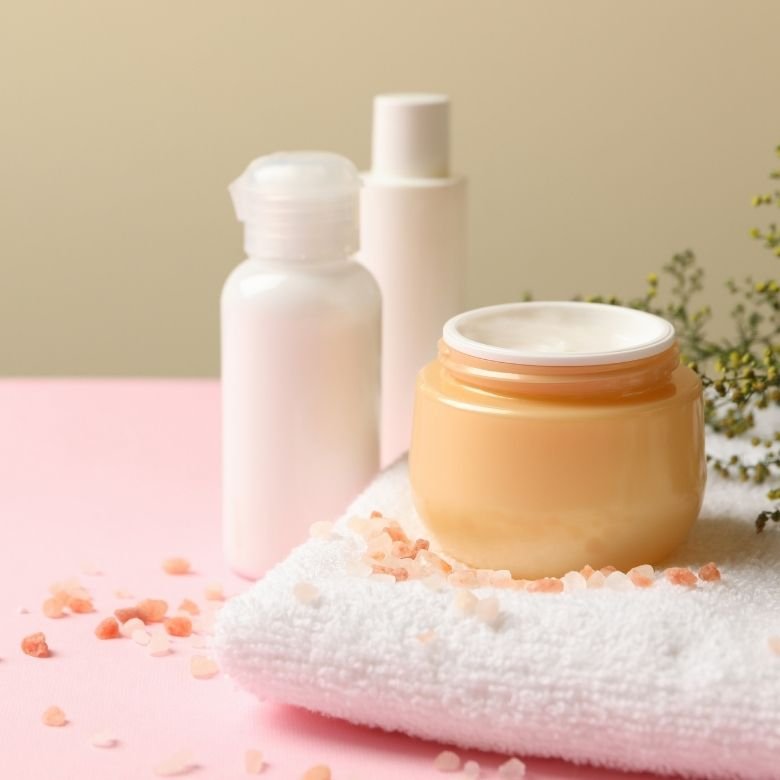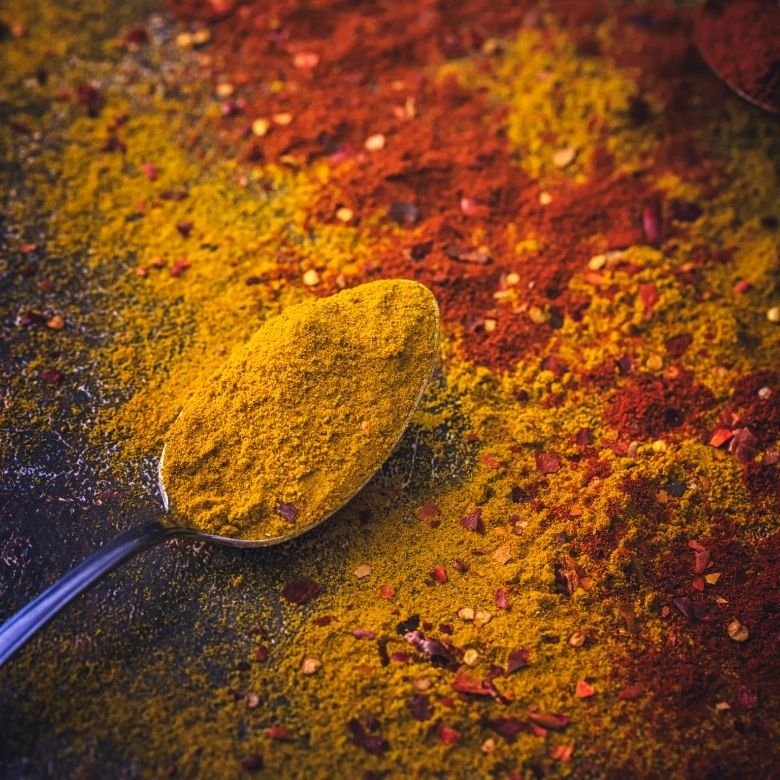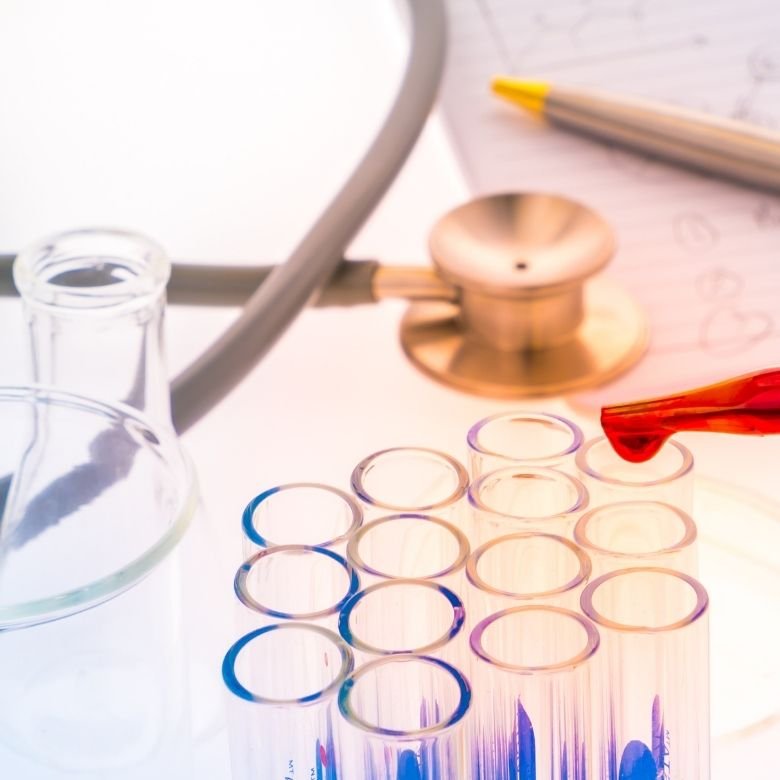Glycols are organic chemical compounds, belonging to a group of polyhydroxy alcohols. In addition to ethylene glycol and glycerol, propylene glycol (structural formula: C3H8O2) is the most widely used representative of this group of compounds, in many commercial and industrial applications. Propylene glycol is an aliphatic alcohol that is used as a skin care agent, viscosity reducing agent, solvent or fragrance, in cosmetics. It also acts as a humectant, antioxidant and emulsion stabilizer. Therefore, it is worth finding out what propylene glycol is and what its properties are.

Propylene glycol – general characteristics
It is now widely used in many sectors of the economy. Its use in the automotive, cosmetic and pharmaceutical industries is due to the properties it is characterized by. Basic information on chemical and physical properties, as well as the safe use of this substance can be found in its safety data sheet.
Basic features and parameters of propylene glycol:
- it is an oily, colourless and odourless liquid, with a slightly sweet taste,
- it is characterized by high viscosity (higher compared to e.g. ethylene glycol),
- it is considered a hygroscopic substance, i.e. it readily absorbs water, e.g. from the surrounding air,
- it is soluble in acetone, chloroform and water,
- it perfectly dissolves a number of resins, dyes and essential oils,
- it has got excellent water solubility and high hygroscopicity, due to the presence of two hydroxyl groups located at adjacent carbon atoms, which can be seen in its structural formula,
- the density of this glycol is 1.04 g/cm3.
Propylene glycol, of a systematic name that is propane-1,2-diol, also known as propanediol, whose physical properties are similar to that of ethylene glycol, due to the very similar structure of the molecules of both compounds. Unlike ethylene glycol, propylene glycol is non-toxic.
On an industrial scale, glycol is obtained in the catalytic and non-catalytic hydration of propylene oxide. The temperature of the reactions taking place reaches 200-220ᵒC, in the case of a non-catalytic process. When we use ion exchange resins or small amounts of sulfuric acid (as catalysts), processes take place at lower temperatures, not exceeding 180ᵒC. The finished product is 20% propane-1,2-diol, 1.5% dipropylene glycol and the remaining ingredients are small amounts of polypropylene glycols. Propylene glycol can also be obtained from waste. Then, it is called bio-propylene glycol.
Propylene glycol – uses
There is a long list of domains and sectors where propylene glycol is used. It is common to use propylene glycol at home. So, let’s pay attention to what propylene glycol is used for:
- in the cosmetics industry, as an ingredient in creams, an additive to toothpastes, mouthwashes and stick deodorants;
- in medicine and pharmacy, as a liquid for distributing the active ingredients of drugs;
- in the food industry, as an agent that facilitates food processing and improves appearance, taste and shelf life;
- fragrance carrier in fragrance oils and massage oils;
- for the production of electro-insulating varnishes, brake fluids and coolants;
- for the production of auxiliary materials in foundry technologies;
- for the production of resins and adhesives;
- in space technologies, as a coolant or a component of a coolant;
- in the plastics industry, as a hygroscopic agent;
- in tobacco products, as a nicotine diluent.
The aforementioned bio-propylene glycol is a product of versatile application possibilities, both as a final product and as an intermediate for further chemical syntheses. It is mainly used in the production of operating fluids in cooling systems, antifreeze fluids, polyester resins and detergents. It can also be found in mixtures that act as a solvent or antifreeze.

Propylene glycol in cosmetics
Propylene glycol, for the production of cosmetics, is readily used all over the world, due to its special properties.
It is a moisturizing agent, which means that, as an ingredient added to cosmetics, it retains moisture in the stratum corneum. It is well-tolerated and should not cause redness or irritation. The presence of this humectant, in the preparation, provides protection against drying and is also one of the promoters of percutaneous passage.
Its INCI name is propylene glycol. INCI stands for International Nomenclature of Cosmetic Ingredients. This system is valid in all countries of the European Union, as well as China, Japan and the United States. INCI is a description for all ingredients and substances used in cosmetics. Names of the substances are given in English, except for those of plant and animal origin – then, their names are written in Latin. Remember, that the order in which it is entered on the package label or leaflet is not accidental. Ingredients with the highest concentration are always listed first.
Let’s briefly summarize information on the use of glycol in cosmetics:
Function: humectant, solvent, plasticizer.
Top benefits: retains water in the skin.
Who should use it: Anyone who needs good skin hydration.
How often should it be used: if allergies do not occur, then regularly, at least once a day.
The presence of propylene glycol in food products
Propylene glycol is known among food additives as E 1520. Many consumers ask themselves what glycol is and what role it plays in the food industry. When considering all the foods to which propylene glycol is added, it is useful to know that it is present in foods as a humectant and solvent (helping to dissolve one ingredient into another). Propylene glycol functions also as an anti-caking agent, antioxidant, flavor enhancer, emulsifier, adjuvant, stabilizer or thickener. In addition, it acts as a coating and antimicrobial agent (helps to kill or grow micro-organisms, such as bacteria or fungi, that may contaminate food). It is also found in flavourings, such as vanilla or almond extracts commonly used in baked goods, as well as in some types of food colouring. It is commonly used as an additive to prevent food spoilage or as a thickener for sauces.
Propylene glycol has many characteristics that are beneficial to packaged foods. Many food manufacturers use it to extend the shelf life of processed foods. These are examples of products containing E 1520: spice mixes, salad dressings, baking mixes for cakes, muffins, cinnamon rolls, cookies and pancakes, but also flavoured teas, alcoholic drinks and highly processed snacks.
Given the widespread use of glycol in the food industry, should we be concerned about it? It is considered to be safe for use in food, in particular, because it is used in small amounts. Please note that the amount of propylene glycol in food is regulated by the FDA to ensure its safe use and consumption. The FDA restricts the uses and amounts of propylene glycol and other ingredients that can be used in food, as well as beverages to ensure maximum safety. The current consumption of propylene glycol is at a safe level and well below the level of concern, and is therefore a safe food additive.

Drug active substance carriers, based on propylene glycol and its other pharmaceutical applications
In medicine and pharmacy, propylene glycol is widely used as an excipient in many medicinal products. The pharmaceutical industry uses glycol as a lubricant in topical applications, as a preservative in solutions or as a solvent in aerosols, parenteral formulations, oral solutions and topical formulations. It is also used as a plasticizer, in aqueous coating formulations.
Recently, more and more has been said about the use of propylene glycol molecules to transport the active substances of the drug into the patient’s body. Glycol used as the so-called carrier (or base) has no significant effect on the body, but the active substance may spread over its surface. Such transport could include controlled drug delivery systems. An indispensable tool for this is the proper carrier, which must, first of all, be non-toxic to the patient. It should properly bind the drug and release it at the site of action, maintaining therapeutic concentration. Its biodegradability and appropriate physical properties, resulting from a changing environment, such as pH and temperature, are very important. The drug transporting medium should also improve drug performance by changing solubility or retention time.
The skin is a place where the application of dermatological drugs, for the topical treatment of diseases, is often carried out. Nowadays, preparations applied to the skin’s surface, but acting on deeper places, such as muscles or joints, are gaining in importance. The action of the drug in such cases is possible, due to the effective absorption of medicinal substances through the skin. For this purpose, sorption promoters are added to many preparations. Alcohols (e.g. ethanol), glycols (propylene glycol) or unsaturated fatty acids are most often used as such promoters. Due to its own solubility in the lipids of the stratum corneum, sorption promoters significantly increase the solubility of medicinal substances in this layer, thus increasing the effectiveness of the entire treatment.
Propylene glycol – health effects
Propylene glycol is not an ingredient with carcinogenic, mutagenic or reprotoxic properties. Clinical studies have shown that it does not cause skin sensitization, although there have been concerns about irritation. However, further research has unequivocally found that this product is safe for consumers. The American FDA has approved the use of propylene glycol in concentrations up to 98% in topical medications and up to 92% in oral solutions.
A potential problem with propylene glycol is that it is a hygroscopic or humectant agent. Moisturizers absorb moisture from everything around and if skincare includes a moisturizer, such as propylene glycol to aid penetration, it could mean that harmful toxins can penetrate the skin, where they would not normally be able to. If these molecules are skin poisons, such as pollutants or chemicals, they can damage the lipid barrier and irritate the skin. In such cases, we are dealing with an allergic reaction to the effect of preparation with glycol. For this reason, it is not recommended to use cosmetics or glycol-containing preparations for people with sensitive skin or for children.
The impact of so-called e-cigarettes on human health and what will be the effect of the chronic inhalation of propylene glycol and glycerol, which are components of the liquid in these devices, have not already been specified. Propylene glycol and vegetable glycerine (glycerine obtained from vegetable fats), mixed with appropriate aromas and nicotine, create this liquid. When heated, they vaporize and can be inhaled. They are found in most currently-produced e-cigarette liquids.

Propylene glycol – FAQ
- Can ethylene glycol be mixed with propylene glycol?
It is not advisable to mix ethylene glycol with propylene glycol. In the case of ethylene glycol and propylene glycol, the main difference is the density of the two compounds. Mixtures with water and other additives are used in coolants. In practice, it is difficult to measure the resistance of such a fluid to freezing, when both types of glycols are mixed and this can negatively affect the operation of the engine and the cooling system.
- Propylene glycol – is it harmful?
Propylene glycol is “generally recognized as safe” by the US Food and Drug Administration (FDA). The Harmfulness and toxicity of this compound have been questioned many times. In literature, cases of eye or skin irritation, as well as the occurrence of allergies, have been reported. However, it should be keep in mind that this is a thoroughly-tested compound, which has a long history of safe use, for example, in cosmetics. It is also often confused with ethylene glycol, which is much more toxic than propylene glycol.
- Allergy to propylene glycol – symptoms?
Please note that this is a potentially allergenic substance. Sensitization to propylene glycol is often diagnosed when allergy to another ingredient is suspected. It causes such reactions as rash, itching, runny nose and nausea. The rash can be very bothersome and can cause painful blisters. If we observe one or more of the symptoms listed above, we should consult an appropriate medical specialist.
- Where can propylene glycol be bought?
Considering that propylene glycol is found in most pharmacy and drugstore products, we can easily buy it in many stores. However, we will not find it in points with natural cosmetics. We will get the pure ingredient in a place, such as a pharmacy, where it is sold in ampoules. Propylene glycol of various purities, for industrial use, can be purchased at dedicated chemical reagent stores. The price of propylene glycol depends on the end use and varies widely.
- https://pubchem.ncbi.nlm.nih.gov/compound/Propylene-Glycol
- https://wwwn.cdc.gov/TSP/PHS/PHS.aspx?phsid=1120&toxid=240
- https://www.britannica.com/science/propylene-glycol